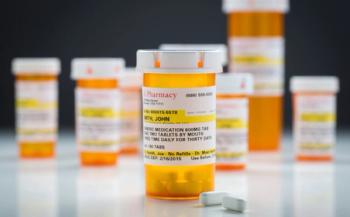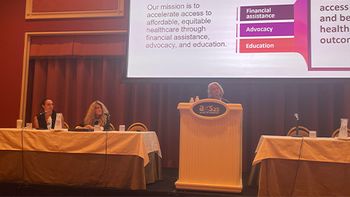
- Pharmaceutical Executive-01-01-2012
- Volume 0
- Issue 0
The Pro-Patient Cometh
How can pharma embrace and interact with increasingly informed and demanding patients to bring positive outcomes for all?
Much has been written about the increasing influence of patients in the healthcare decision-making process, but this assertion oversimplifies the changing dynamics of healthcare. Patients are not taking over the healthcare system, and this oversimplification could easily lead to poor marketing choices.
It is more accurate to say that the healthcare ecosystem is now comprised of multiple stakeholders with a far more complex decision-making dynamic than existed just a few years ago. In addition, patients are not a single homogenous unit. Some may have little or no impact on treatment decisions or healthcare choices while others may take an active individual role. But the ones that we find really interesting are those taking on almost an 'activist' role, impacting not only their own healthcare, but potentially many, many others as well. We call this last group the "pro-patient."
This is the pro-active patient. They are not just personally empowered and assertive, but broadcast their experiences, opinions, and objectives and therefore have a far wider sphere of influence.
We do, of course, know these people in the consumer world. There is the experience of Dave Carroll who, in July 2009, experienced poor customer service from United Airlines after it damaged his guitar in transit. Not satisfied with the outcome, Carroll posted his video "United Breaks Guitars" on YouTube and it became a sensation, garnering 5.5 million hits in the first year. Such a widely broadcasted message made it impossible to ignore Carroll any longer. And more recently there was the online outcry against Netflix. First the company mishandled a significant price increase (CEO Reed Hastings quickly apologized), but then announced that it was going to split its offering into two separate services, the DVD mail-order service and the online video streaming service. The blogosphere erupted and Netflix's stock lost $8 billion in value in a matter of weeks.
Patient Opinion Leaders
People like Carroll and the Netflix bloggers exist in the healthcare ecosystem too. If you search them out, you will find this vocal minority active in online forums. The have become the de facto Patient Opinion Leaders (POL)—and just as every pharma company has a KOL strategy, they now need a POL strategy too.
These people have always existed. What is different now is that Web 2.0 gives them a much broader audience. In the past their sphere of influence was limited to family and friends, but now their audience can be measured in thousands or millions.
There are many services, such as Ipsos's buzz tracking, that identify and listen to the ongoing online exchange of information and opinions related to healthcare conditions and medications. Work that our company recently completed in Europe sought to profile these pro-patients and understand the potential implications for pharma.
We saw some examples of the negative passion of pro-patient activity, railing against the consequences of side effects of medication, for example, but most of the pro-patients we spoke to had good intentions and saw themselves as providing a valuable service.
Positive Force
An example: Iris is past retirement age in the UK and balances running her own online cake business with authoring her own online newsletter, website, and blog for Type 2 Diabetes. Iris's objectives are different from those of Dave Carroll. He wanted to embarrass United Airlines by highlighting its poor customer service. Iris, on the other hand, wants to help people. She spends a tremendous amount of time collecting new information about diabetes treatments from around the Web to provide a better, more practical source of info than she felt existed for people like her. She believes that an educated diabetes patient will only improve the physician/patient dialogue, and will ultimately lead to healthier patients.
Pro-Patient Effect
What are the implications of people like Iris in today's healthcare system? This kind of pro-patient broadcasting clearly has the power to influence the physician/patient dynamic on a wide scale. Interestingly, when we asked physicians about this phenomenon, responses varied by country (more positive in the UK, less positive in Italy for instance), but overall physician reaction could be characterized as cautious at best.
This is either because the physician believes they are going to have to deal with a patient with the wrong information, or because they have someone who wants to debate and challenge rather than just listen, therefore taking up precious time in a consultation. Ultimately, this may lead to a more informed patient who is more adherent to medication, for example, but it may also lead a misinformed patient who will ask for drugs not appropriate for them or make their own poor healthcare decisions based on incorrect information and misplaced confidence.
Physicians in countries such as Italy and Spain, where the traditional patient/physician relationship is one where the patient is highly deferential, find the arrival of this new type of patient perplexing and intimidating. These pro-patients come prepared, have higher expectations than other patients and can have a more mature attitude towards their condition. However, as a diabetes specialist in Italy told us: "It is easier to give information to someone who doesn't have any, rather than having to re-educate those who have the wrong information ... it makes the consultation complicated and makes my life harder."
So perhaps surprisingly, even if a patient's source of information is good, or may have been from a pro-patient who broadcasted with the best intentions to help educate, this can still be viewed less-than-positively by physicians. So as pharmaceutical marketers, what lessons can we learn?
The Takeaways
First of all, ensure you understand who is creating the online narrative in your category and even for your brand. Buzz monitoring services can help you do that. This area of investigation can also help you synthesize what the competing dominant narratives are that are used to explain your category (for example, genetics versus poor diet as etiology). Knowing the dominant narratives allows you to determine whether your brand strategy will align with existing pro-patient beliefs.
Secondly, learn from the Netflix debacle that you ignore pro-patients at your peril. POLs want to know increasingly complex information (they click on 'physician,' not 'patient,' when offered a choice of websites). They want to know the clinical trial data and even physicians' financial relationships with a company. So go ahead and make this information accessible to them.
Thirdly, do not try to control them. They will continue to seek and to share information—perhaps not all of it accurate. But in the unedited, anyone-is-author world of the Internet, you cannot control the information, misinformed or otherwise. Rather, ensure patients have easy access to the correct information and think about how they may be able to help. Ipsos is working with the National Consumers League on its 'Script Your Future' national patient adherence campaign (See Pharm Exec, December 2011) along with many patient advocacy groups such as Mended Hearts for patients with heart disease. Think about how these Patient Opinion Leaders who are broadcasting online could support a strong adherence message.
Finally, think about how you can better equip the physician with information and tools to support their patient discussions. This may include more detailed information about a disease area or medication, but may also include lists of recommended websites, other reputable sources of information, or even the current dominant pro-patient narratives. As pharma companies strive for ways to deliver value to HCPs beyond their brands, what about offering advice or training on how to deal with a misinformed patient? Or to help physicians change their approach to a consultation, into one which resembles more of a peer-to-peer discussion? Assisting with the softer skills that are required for facilitating consultations is where the pharmaceutical industry can help.
The emergence of the pro-patient should come as no surprise. After all, patients are just consumers with medical conditions. We should expect them to act like consumers in all aspects of their lives. This means that those who have the passion will want to influence others as much in the healthcare space as they do in the consumer space. The critical question is how we can help physicians ensure that this empowered and passionate group of patients is channelled in the right direction. So, for your 2012 marketing plan, next to your KOL strategy, add another line: POL Strategy.
Elys Roberts is President and CEO of Ipsos Health in North America. He can be reached at
Sarah Phillips is head of health at Ipsos UK. She can be reached at
Articles in this issue
almost 14 years ago
Pharmaceutical Executive Digital Edition - January 2012almost 14 years ago
Hungary Report: Redefining Sustainabilityalmost 14 years ago
Emerging Markets: Bridging the Cancer Dividealmost 14 years ago
Financing R&D Through a Range of Consumer Productsalmost 14 years ago
New Year, New Issuesalmost 14 years ago
Innovation: Why is Pharma Scared to Death?almost 14 years ago
Top Medical Innovations 2012almost 14 years ago
Essential Questions for Essential Benefitsalmost 14 years ago
Copay Cards and Coupons: Letting the Facts Get in the Wayalmost 14 years ago
Pharma 2012: Hard Times Before the HarvestNewsletter
Lead with insight with the Pharmaceutical Executive newsletter, featuring strategic analysis, leadership trends, and market intelligence for biopharma decision-makers.





